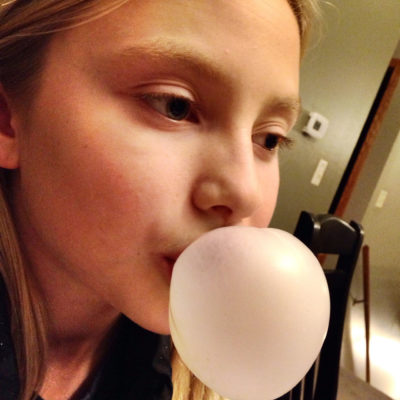 If you’re a parent or have been around children often, you’ve likely witnessed a child (or more!) melting down or throwing a temper tantrum. Children can sometimes have difficulty regulating their emotions, especially if developmentally they have not yet reached that milestone. Parents need to have tools to help their children regulate their emotions when they are not yet able to self-regulate. One tool that has worked well for my children is using sensory strategies to help them regulate their emotions. Sensory strategies include input to one or more of the five senses.
If you’re a parent or have been around children often, you’ve likely witnessed a child (or more!) melting down or throwing a temper tantrum. Children can sometimes have difficulty regulating their emotions, especially if developmentally they have not yet reached that milestone. Parents need to have tools to help their children regulate their emotions when they are not yet able to self-regulate. One tool that has worked well for my children is using sensory strategies to help them regulate their emotions. Sensory strategies include input to one or more of the five senses.
Here are a few of my favorite sensory coping skills:
Gum
Gum provides sensory input which can help calm, soothe and organize thoughts to promote self-regulation. Gum can reduce anxiety, increase focus, reduce fidgeting, and reduce chewing on clothes, fingers and other objects. It is also difficult to cry when you’re chewing a giant wad of chewing gum. Allowing a child to chew gum can also be written in a school Individual Education Plan (IEP) as a tool to help with focus during school. Many schools even encourage chewing gum during standardized testing. Of course, parents should use gum only when age appropriate and teach their child to be responsible when chewing gum and the importance of throwing gum in the trash when they’re done.
Sweet – Do you ever crave sweet foods when you’re feeling anxious or stressed? Sweet foods are calming. Eating sweet foods can trigger a process in the body that creates a chemical in the brain called serotonin. Serotonin is a feel-good chemical and helps to regulate anxiety and mood. Low levels of serotonin can result in depression/anxiety disorders. Eating a healthy diet is also important for self-regulation so use naturally sweet food like fruits and use sweets sparingly.
Sour – Sour foods are alerting and can help wake up the regulatory part of your brain. When a child is super dysregulated a few sour skittles or a swig of lemon juice can help bring him or her back to reality! I keep a stash of sour skittles in my purse for this very reason!
Fidgets – Fidget tools provide sensory input to increase self-regulation, attention, participation and performance. Some classrooms incorporate these tools to help children focus during school. For example, some classrooms use alternative seating options such as stools, yoga balls, bean bags, rockers, pedal desks, wobble seats, and bouncy bands on chair or desk legs. Fidget toys do not need to be big to be effective and the best fidget toys are small and not distracting to others but help the child who is using it to engage and stay regulated. A recent popular trend the fidget spinner became banned in many schools because of the distractions it caused. Some few good examples of small fidget toys are: stress balls, chewelry, tangles, enmeshed marbles and worry stones.
Smell – Certain essential oils such as lavender, chamomile, and frankincense can also help with calming and regulation. Some essential oil companies make stress or relaxation blends of oils. Essential oils can be diffused, rolled on the skin, or added to a bath to promote relaxation and self-regulation.
Weighted items – When you’re at the dentist having x-rays done have you ever noticed a feeling calm when they put the x-ray apron on? Weighted items such as weighted blanket, weighted lap pad, weighted vest or ankle weights can provide deep pressure. Weighted blankets can also help with sleep issues. There is a science behind pairing the appropriate weight of blanket to body weight so please consult your doctor or occupational therapist before trying a weighted blanket.
All 5 senses – 5, 4, 3, 2, 1 – This is a mindfulness technique where you use all of your five senses: sound, sight, touch, taste, and smell to ground yourself. This technique can help to calm and get through tough or stressful situations. You start by taking deep breaths. As you continue to take deep breaths you look at your surroundings and think to yourself 5 things you can see, 4 things you can touch, 3 things you can hear, 2 thing you can smell and finally 1 thing you can taste. Take time to think about each answer slowly and mindfully.
Using sensory strategies to regulate emotions can be helpful for any child. However, one of the major risk factors in developing sensory problems is trauma and since all children who join their family through adoption experience trauma these strategies may be specifically beneficial for adoptive parents. If you believe your child exhibits out of the ordinary reactions to sensory stimulus, you should contact your doctor or occupational therapist who specializes in sensory integration.
Photo Credit: David Mulder
